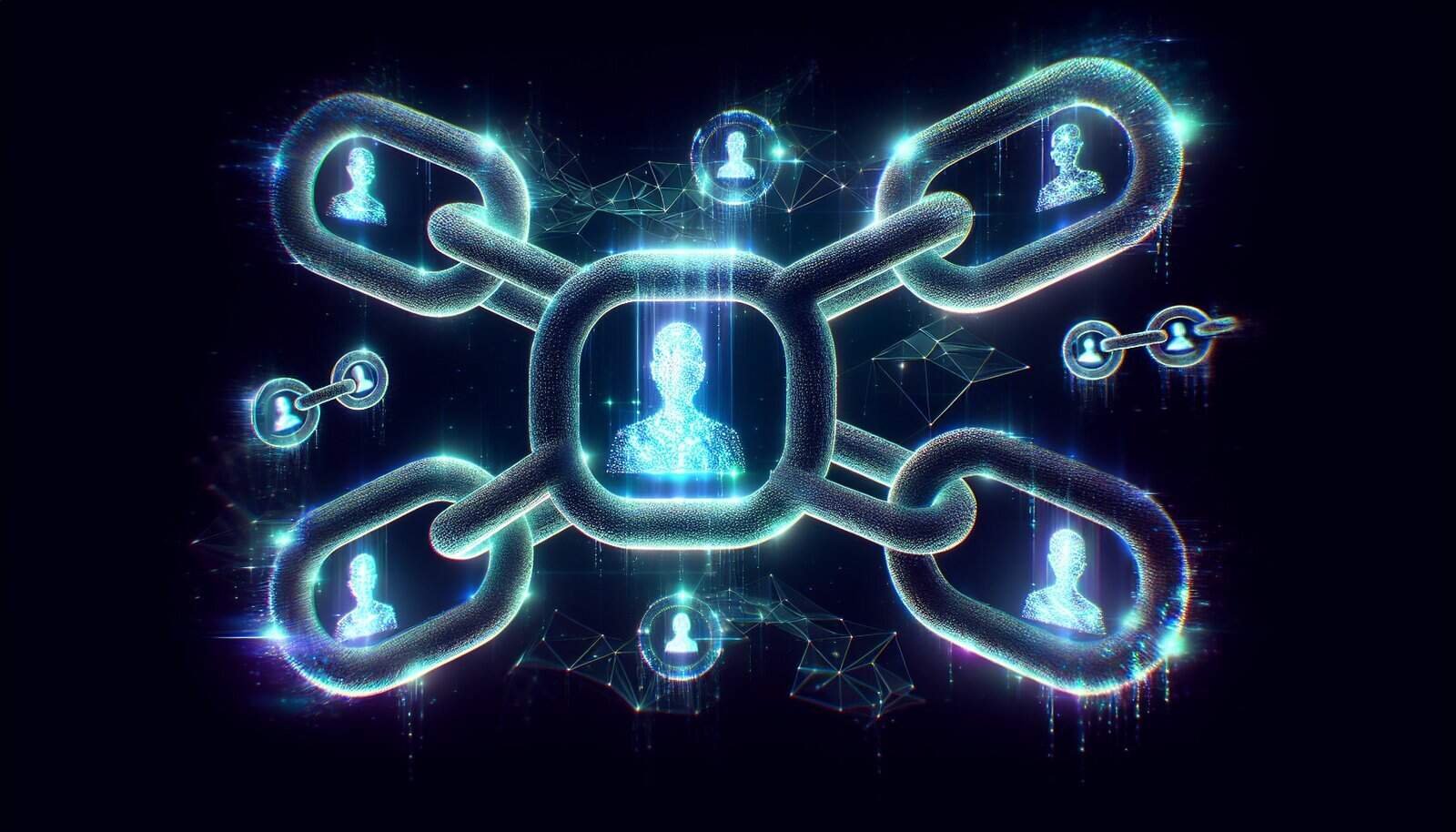Have you ever wondered how your identity could exist in the digital realm, in a way that’s as verifiable and trustworthy as it is on paper? The concept of an on-chain identity is one such fascinating development in the blockchain space, serving as a potential solution for secure and efficient identity verification. This not only disperses traditional centralized authentication methods but also gives you control over your personal data. Let’s delve into what on-chain identity means and how it might bring real yield to your future interactions online.
Understanding On-Chain Identity
On-chain identity refers to the digital representation of an individual’s or entity’s identity on a blockchain. This identity is both secure and transparent. Unlike traditional identities bound by physical documentation or centralized databases, on-chain identities leverage blockchain’s decentralized nature. They provide an immutable, cryptographic record that can be universally trusted and accessed.
When you think about on-chain identity, imagine a digital passport that isn’t stored on a single server but is instead distributed across thousands of computers worldwide. It’s your digital self, crafted to be unique, private, and under your control. But how exactly does this work, and what makes it different from the usual way you verify who you are?
How Does On-Chain Identity Work?
In its core operation, on-chain identity uses cryptographic keys to form a secure identity token on a blockchain. Let’s break this down:
Cryptographic Keys: Much like how you have a password for your email account, on-chain identities use a pair of cryptographic keys—public and private keys. The public key is akin to your address or username, while the private key is your password. You must keep this private key secure because it’s the gatekeeper to your identity.
Decentralization: Blockchain’s decentralized nature means that no single entity has control over your identity. It’s distributed across a network of nodes, making it resistant to censorship or unauthorized changes.
Immutability: Once your identity is on the chain, it’s immutable. This means that alterations cannot be made without a transparent record, preventing fraud or identity theft.
Here is a simple table to illustrate these concepts:
| Feature | Description |
|---|---|
| Cryptographic Keys | Two key system providing secure access and verification. |
| Decentralization | Identity is distributed, reducing risk of centralized hacking or data breaches. |
| Immutability | Records are permanent and tamper-resistant, ensuring integrity and trust. |
Why On-Chain Identity Matters
The significance of on-chain identity lies in the potential to revolutionize how identities are managed. This is especially crucial in our ever-expanding digital lives where data breaches are rampant. Imagine having a digital ID that grants access across platforms effortlessly, without needing to repeatedly input your information. It enhances your privacy, security, and usability.
Privacy and Security Benefits
With on-chain identity, you can expect enhanced privacy because only you have control over who can access your information. Unlike traditional systems where data can be sold or leaked, blockchain puts you in the driver’s seat. Every time someone wants to access your information, they need your permission—granting you unparalleled privacy.
In terms of security, blockchain’s design makes unauthorized access or changes near impossible. This provides a level of assurance that traditional databases simply can’t match. Moreover, the transparency of blockchain means that any attempt at tampering can be detected easily.

Exploring the Applications of On-Chain Identity
The reach of on-chain identity extends across various sectors. Its applications hold promise in areas such as finance, healthcare, and social media, among others.
Financial Services
In the financial world, identity verification is paramount. Blockchain can streamline this process by creating a reliable, single source of truth. When you want to open a bank account or invest in stocks, your on-chain identity can be used to verify your credentials quickly and efficiently.
This eliminates cumbersome paperwork, speeds up transactions, and opens up financial services to the unbanked population, who can’t produce traditional identification.
Healthcare
In healthcare, an on-chain identity can revolutionize patient data management. Instead of relying on fragmented records across various providers, your health information can be securely stored on a blockchain. You control which healthcare providers access this data, ensuring only the right people have access to your medical history, thereby protecting your privacy while improving care continuity.
Social Media and Networking
Social media platforms often struggle with bots and fake accounts. Implementing on-chain identity could solve this by ensuring that all users are verified individuals. This would foster a more genuine and trustworthy community atmosphere online where interactions are real and accountability is possible.

On-Chain Identity and Real Yield
Now, you might be wondering, what is “real yield,” and how does it tie into on-chain identity? Real yield refers to the tangible benefits that you receive from a system—benefits like financial returns, time savings, or added security that are substantive and not hypothetical.
Real Yield Explained
In the context of on-chain identities, real yield embodies the practical benefits that manifest from adopting such a system. Here are some specific yields you might notice:
- Financial Returns: Lower costs in transactions due to reduced need for intermediaries.
- Time Efficiency: Faster processes in verification and authorization, saving you time and reducing friction in tasks like onboarding or logging into services.
- Data Security: Improved protection against breaches and identity theft, offering peace of mind and reducing the potential costs of fraud.
How On-Chain Identity Delivers Real Yield
On-chain identity can bring substantial real yield to individuals and organizations:
Cost Efficiency: By reducing the need for manual verification processes and intermediaries, less money is spent on validating identities. This can lead to cheaper services and products for you.
Time Savings: Verification becomes almost instantaneous when your identity is on-chain. This can significantly reduce wait times and speeds up access to various services.
Ease of Use: With a unified identity system, there’s no need to remember multiple usernames, passwords, or go through lengthy registration processes for different platforms.
The benefits thus go beyond theoretical concepts, offering tangible improvements in day-to-day activities and systems.

Challenges and Considerations
While the potential for on-chain identity is vast, it is not without its challenges. Being a relatively new concept, it faces hurdles that need to be overcome for widespread adoption.
Technical Limitations
Blockchain technology, especially public blockchains, can face scalability issues. Managing millions of identities could require significant computational resources and handling large transactions volumes could become cumbersome.
Regulatory Landscape
The legal status of on-chain identities is still evolving. Different countries have various regulations regarding digital identities, and it’s crucial to ensure that any on-chain identity solution complies with existing laws and is adaptable to new regulations.
User Education and Adoption
For on-chain identity to become mainstream, users need to be educated. This involves understanding how to manage cryptographic keys and what it means to have an identity on a blockchain. User-friendly solutions are essential in making the transition smooth.

The Future of On-Chain Identity
In speculating about the future, on-chain identity holds undeniable potential to transform how we approach digital interactions. As technology evolves, the barriers will diminish, opening the door to new applications and efficiencies.
Could we see a future where every online account you have, every transaction you make, and every medical record you possess is seamlessly linked through an unassailable identity system? Such a future not only enhances personal convenience but also fosters a new era of trust in digital spaces.
Long-Term Vision
Picture a world where the concepts of privacy, security, and efficiency are not trade-offs but standard features of everyday online engagements. This is the vision for on-chain identity—a world where digital interactions are frictionless and secure, and identities are yours to control.
On-chain identity, with all its promise and potential, is poised to bridge the gap between today’s scattered identity verification systems and a future where your identity is solely in your hands, free from the constraints of centralization.
As you ponder this future, consider how this shift might impact your relationship with technology, enhance your privacy, and potentially unlock new opportunities you hadn’t imagined possible. The transformation is just beginning, but its impact could be as profound as the shift to digital communication was a few decades ago.
The evolution of on-chain identity presents an exciting frontier not just for technology, but for you as a digital citizen. How secure and convenient could your digital interactions be if you had full control over your identity? The possibilities are endless, and the journey toward this new paradigm of identity has only just begun. Whether or not this concept comes to fruition soon, its implications for privacy, security, and efficiency make it a topic worth understanding and considering as the digital world continues to grow and change.

